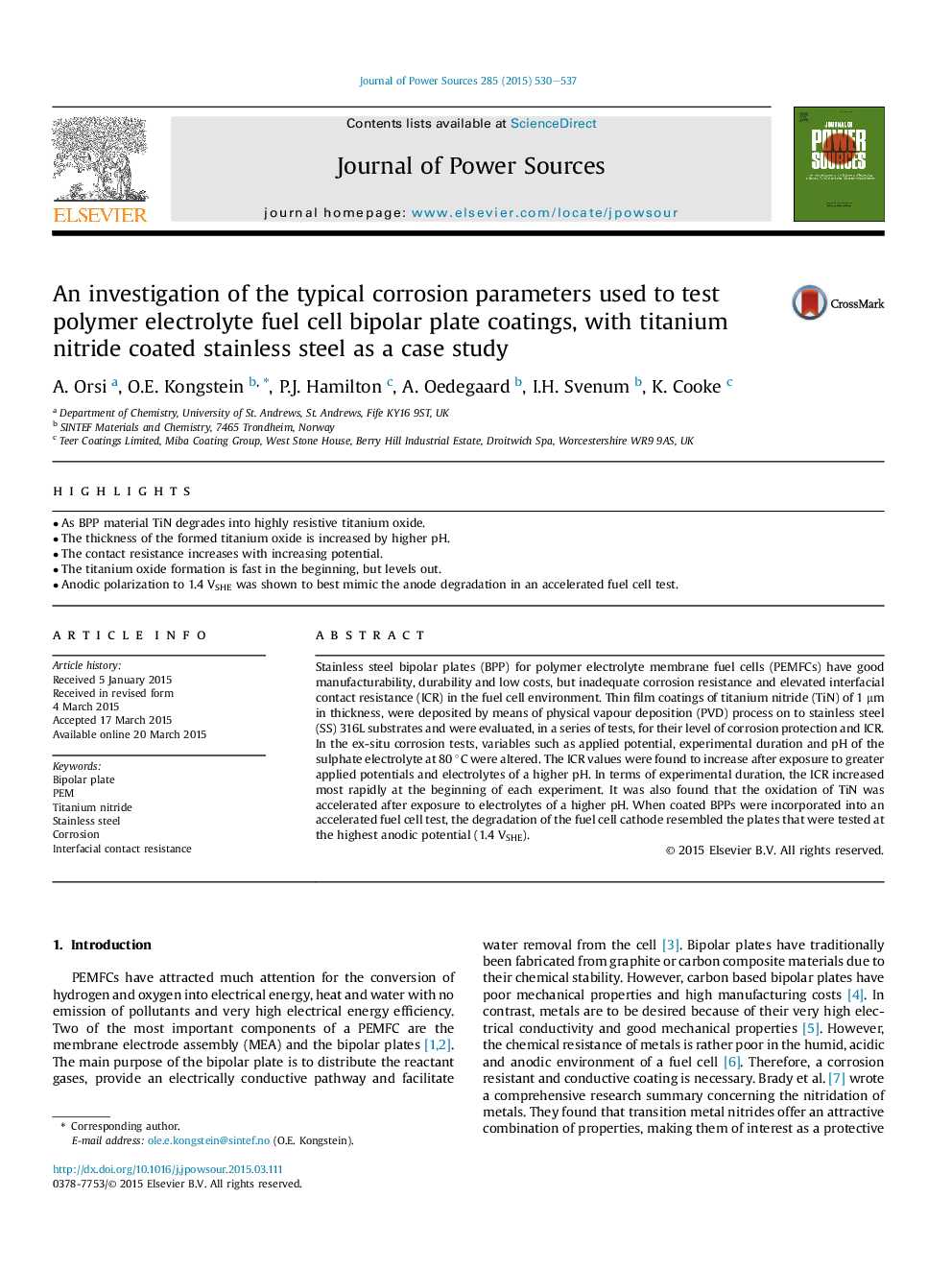| Article ID | Journal | Published Year | Pages | File Type |
|---|---|---|---|---|
| 7732258 | Journal of Power Sources | 2015 | 8 Pages |
Abstract
Stainless steel bipolar plates (BPP) for polymer electrolyte membrane fuel cells (PEMFCs) have good manufacturability, durability and low costs, but inadequate corrosion resistance and elevated interfacial contact resistance (ICR) in the fuel cell environment. Thin film coatings of titanium nitride (TiN) of 1 μm in thickness, were deposited by means of physical vapour deposition (PVD) process on to stainless steel (SS) 316L substrates and were evaluated, in a series of tests, for their level of corrosion protection and ICR. In the ex-situ corrosion tests, variables such as applied potential, experimental duration and pH of the sulphate electrolyte at 80 °C were altered. The ICR values were found to increase after exposure to greater applied potentials and electrolytes of a higher pH. In terms of experimental duration, the ICR increased most rapidly at the beginning of each experiment. It was also found that the oxidation of TiN was accelerated after exposure to electrolytes of a higher pH. When coated BPPs were incorporated into an accelerated fuel cell test, the degradation of the fuel cell cathode resembled the plates that were tested at the highest anodic potential (1.4 VSHE).
Related Topics
Physical Sciences and Engineering
Chemistry
Electrochemistry
Authors
A. Orsi, O.E. Kongstein, P.J. Hamilton, A. Oedegaard, I.H. Svenum, K. Cooke,
